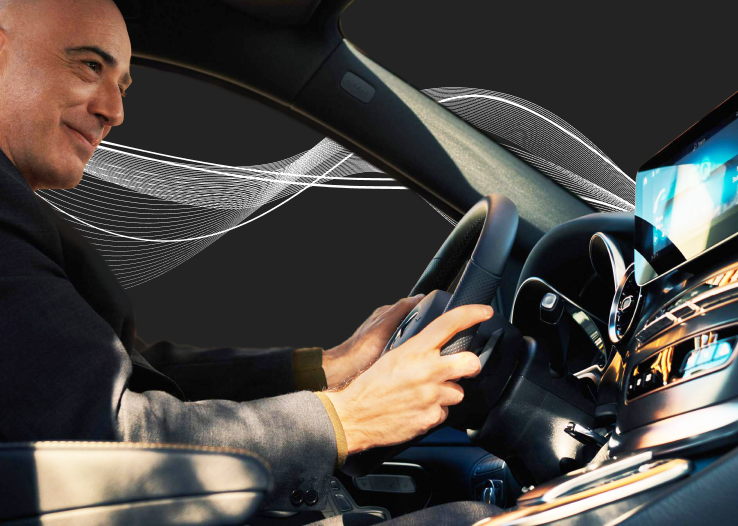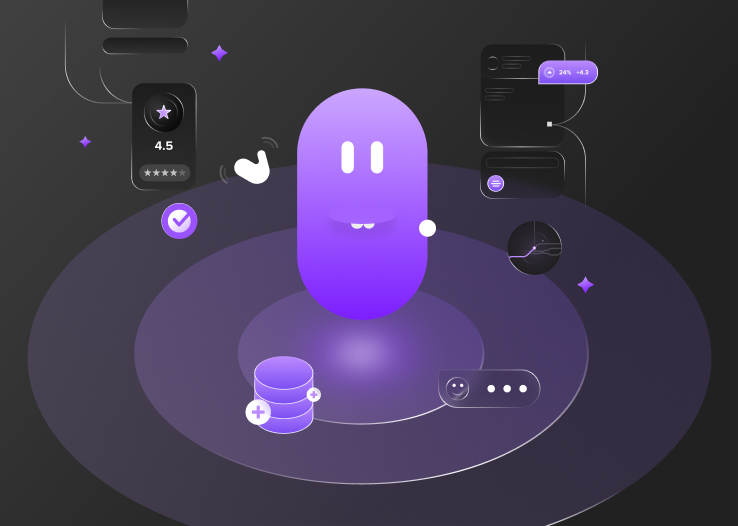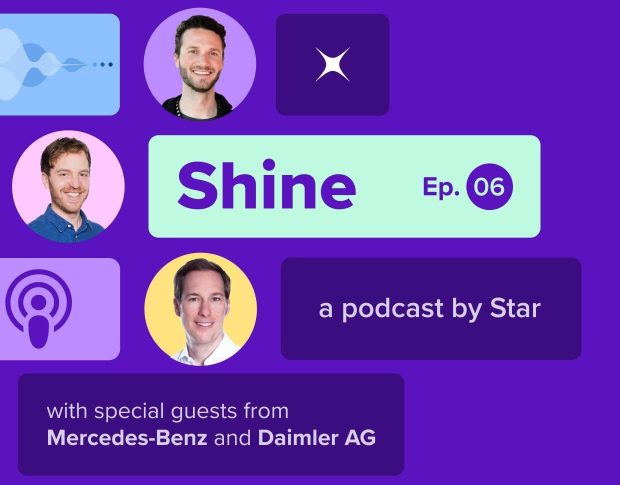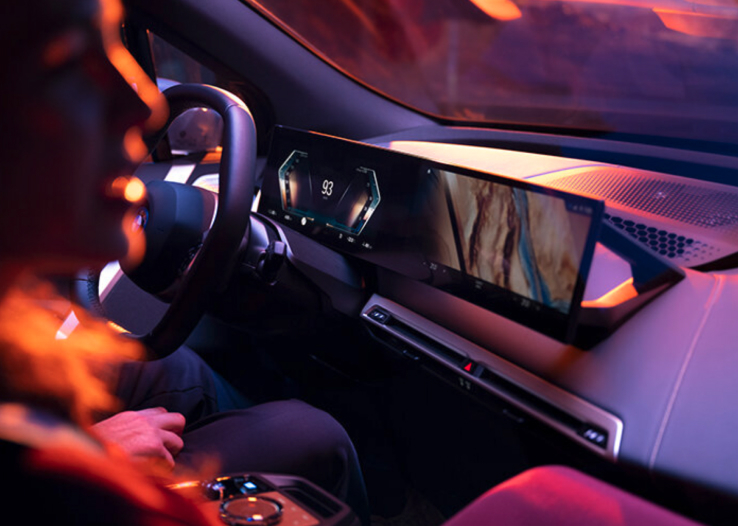We're in the era of software-defined vehicles (SDVs), where technology is transforming the driving experience. As buttons dwindle in favor of digital interfaces and voice control, often powered by digital assistants, is becoming increasingly ubiquitous. While the adoption rate of in-car voice assistant technology is still at a growth phase, with 17% of US drivers and 9% UK drivers using them regularly, according to YouGov, their influence in daily life is rapidly expanding. As a result, drivers will expect their cars to respond more seamlessly to their voice commands. Incorporating voice technology into vehicle hardware not only enhances driver convenience but also promotes safety by reducing distractions on the road.
With driving experiences becoming less and less defined solely by horsepower and engine performance, the way drivers interact with their vehicles is becoming a key differentiator for car manufacturers. In-car voice assistants offer a hands-free and intuitive way to control various vehicle functions such as navigating, in-car entertainment and temperature change. By minimizing manual interactions, these automotive voice assistants reduce distractions and allow drivers to focus on the road, contributing to a safer and more enjoyable automotive experience. It can also provide real-time, context-aware support without needing traditional customer service channels. This means drivers can get help quickly and easily, without having to pull over or call a roadside assistance service.
Human-centric design and VUI
Voice User Interfaces (VUIs) are technologies that enable users to interact with in-car voice assistants through speech, making them an essential component for voice-controlled systems. It augments traditional interaction methods by integrating deep linguistic understanding and automatic speech recognition, making VUIs not just functional but also intuitive and responsive to human communication.
“Our expertise and extensive training in both design and linguistics allow us to create in-car digital assistants that are functional, intuitive and empathetic. We believe that every interaction between the driver and their in-car assistant should feel as natural as conversing with a human companion without the need for drivers adjusting their speech patterns. Our ultimate endgame is to embed natural user interfaces in digital assistants so that every interaction feels effortless,” said Star Senior Conversational UX Designer Elisabeth Juergens.
A truly human-centered VUI recognizes the subtleties of human speech, including accents, dialect and even emotional cues. This ensures that the VUI is inclusive and accessible to a wide range of users.

Beyond linguistic nuances, prioritizing brand consistency and driver needs in VUI designs is equally needed. Carefully studying clients’ brand identity and promise to their customers, ensuring that the digital assistant's personality is a natural extension of the brand. This means tailoring the assistant's tone and vocabulary to reflect the brand's values and messaging. For example, a parent with two kids driving a family SUV might prefer a friendly, supportive assistant, while an outdoor enthusiast driving a roofless Jeep might appreciate a more adventurous and energetic personality.
By aligning the voice assistant's character with the brand's identity, we create a seamless and personalized interaction that feels almost human, fostering a deeper connection between the driver and the vehicle. Just as any successful product feature, a well-aligned digital assistant can strengthen brand engagement and loyalty.
Buy vs build – a strategic decision

Developing a proprietary solution allows OEMs complete control over the vehicle user experience and data management, crucial for maintaining privacy and customizing functionality to fit brand identity and user expectations. For example, a proprietary voice assistant enables a brand-specific interaction (a driver can say "Hey [brand name]" instead of “Alexa" or “Hey Siri”), which can significantly reinforce the brand's presence and loyalty among drivers. Mercedes, for instance, has invested in building its own in-car OS to power a cohesive ecosystem that enhances their infotainment systems and other in-car functionalities. MINI also offers a new user experience with its Operating System 9.
On the other hand, leveraging third-party platforms can expedite development time and tap into already established ecosystems, offering users familiar interfaces and functionalities. This can be particularly advantageous for integrating the vehicle into the user’s existing digital life. However, this often comes at the cost of reduced customization and potentially diluting the brand’s unique identity. Companies like Volvo, Polestar and Renault are all using Android Automotive OS, benefiting from its extensive app ecosystem and regular updates.
“In-car assistants are an extension of your brand – how you decide on their design and integration shouldn’t just be based on your technical capabilities but also involve strategic considerations related to brand identity and revenue models,” Elisabeth further explains. “We often ask in our initial workshop with clients on how they wish to be positioned in the market and have discussion on whether they aim to create a distinctive in-car environment with a unique voice assistant or prefer to integrate into the broader digital ecosystem that their customers already use.”
For instance, the choice may vary based on target customer demographics. Households with multiple drivers sharing the same car probably prefer a highly interoperable system that can connect and interact with different digital ecosystems. Whereas smaller vehicles or luxury brands that appeal to users who view their car as part of their identity, a unique, brand-specific system might enhance the overall ownership experience.
In-car AI technology in vehicles
Over the past few years, the automotive industry, as many others, has been witnessing another revolution with the mainstream adoption of AI technologies. Whether it’s a physical in-car chatbot like Nio's NOMI or AI-powered vehicle system like Ji Yue 01's AI Car Robot or Mercedes-Benz adding ChatGPT to its MBUX Voice Assistant to make their cars the centre of their customers’ digital lives, AI is enabling more natural, personalized and intelligent interactions between a driver and its vehicle.
From a design perspective, AI addresses critical challenges such as cultural sensitivity, which traditional voice assistants often struggled with. Large Language Models (LLMs) trained on diverse datasets can comprehend and respond appropriately across multiple languages and dialects, crafting respectful and engaging experiences for diverse user groups. This capability is crucial in designing VUIs that resonate on a global scale.
Furthermore, AI-driven co-pilots excel in their ability to undergo fast and continuous improvements throughout the lifecycle of a vehicle. This dynamic capability breaks away from the traditional static nature of physical controls and the relatively slower evolution of touch-screen interfaces, heralding a new era of adaptability and user-focused enhancements in automotive technology. In addition, collecting and analyzing passenger data through AI, OEMs can gain valuable insights into user preferences and behaviors. This data can be used to personalize the in-car experience, develop new features and services and even create additional revenue streams.
While AI offers new potential to elevate in-car experiences, brands must approach its integration with caution – there are potential risks and challenges associated with its implementation. Anne and Elisabeth explain that AI models can perpetuate or amplify biases present in the data they are trained on causing negative reactions from drivers. Additionally, the use of AI often involves collecting and processing large amounts of data, which can raise privacy concerns. They believe it's crucial to approach AI integration in VUI and overall HMI with a sense of responsibility and to consult with experts who can help identify and mitigate potential risks so you can create a safe and humane experience for drivers.
“AI integration should be seamless and transparent to maintain user trust with your brand. A proper onboarding process is really important to make sure drivers understand data usage and the benefits of AI. You also want to make sure that AI doesn’t end up doing things that irritate the driver,” Anne adds.
Envisioning digital assistants of tomorrow
Leveraging the latest advancements in natural language processing and in-car AI technology, AI-powered assistants are redefining the user experience in the way drivers interact with their vehicles. These intelligent systems not only enhance car voice functionality but also integrate voice AI in cars to deliver more intuitive and effective solutions. From streamlining daily tasks to proactive vehicle maintenance, these digital assistants ensure a seamless and interactive driving journey, demonstrating the power of modern voice AI. Here are a few examples of how our AI-powered assistants can transform your drive:
The AI task master understands complex combinations of functions and can automatically create tasks based on user requests. that traditional voice commands cannot do ‘such as find a coffee shop near me with outdoor seating with free street parking’.
The travel assistant uses real-time data to dynamically adjust routes, considering factors like traffic, weather and personal preferences. Drivers can use voice commands to request route changes or obtain additional information.
The predictive maintenance assistant can proactively monitor vehicle health and provides voice notifications about potential issues before they escalate.
The driving coach uses AI to provide real-time eco-driving tips and fuel efficiency analytics. Drivers can receive personalized guidance on how to improve their driving habits and reduce their environmental impact.
The charging and routing assistant can pre-book charging stations and route the vehicle dynamically to the reserved station with a simple voice command.
What’s next
In-car voice assistants are no longer a luxury feature but a necessity for modern drivers. They offer personalized, intuitive interactions that build brand trust and loyalty. To succeed, OEMs must ensure transparency, data privacy and a human-centric approach when building in-car experience and innovation.
At Star, empathy and human-centricity fuel our design approach. We are pioneers in in-car companions, specializing in the creation of personal assistants that are part of a holistic HMI experience. Our VUI solutions are engaging, intuitive and emotionally intelligent, seamlessly blending physical and digital interactions to connect deeply with drivers. We’re committed to delivering innovative solutions that align with your brand and meet the evolving needs of today’s drivers. From early-stage exploration to design implementation, our tailored tools and processes ensure we create exceptional in-car experiences. Put our experience to work for you - contact us today!











